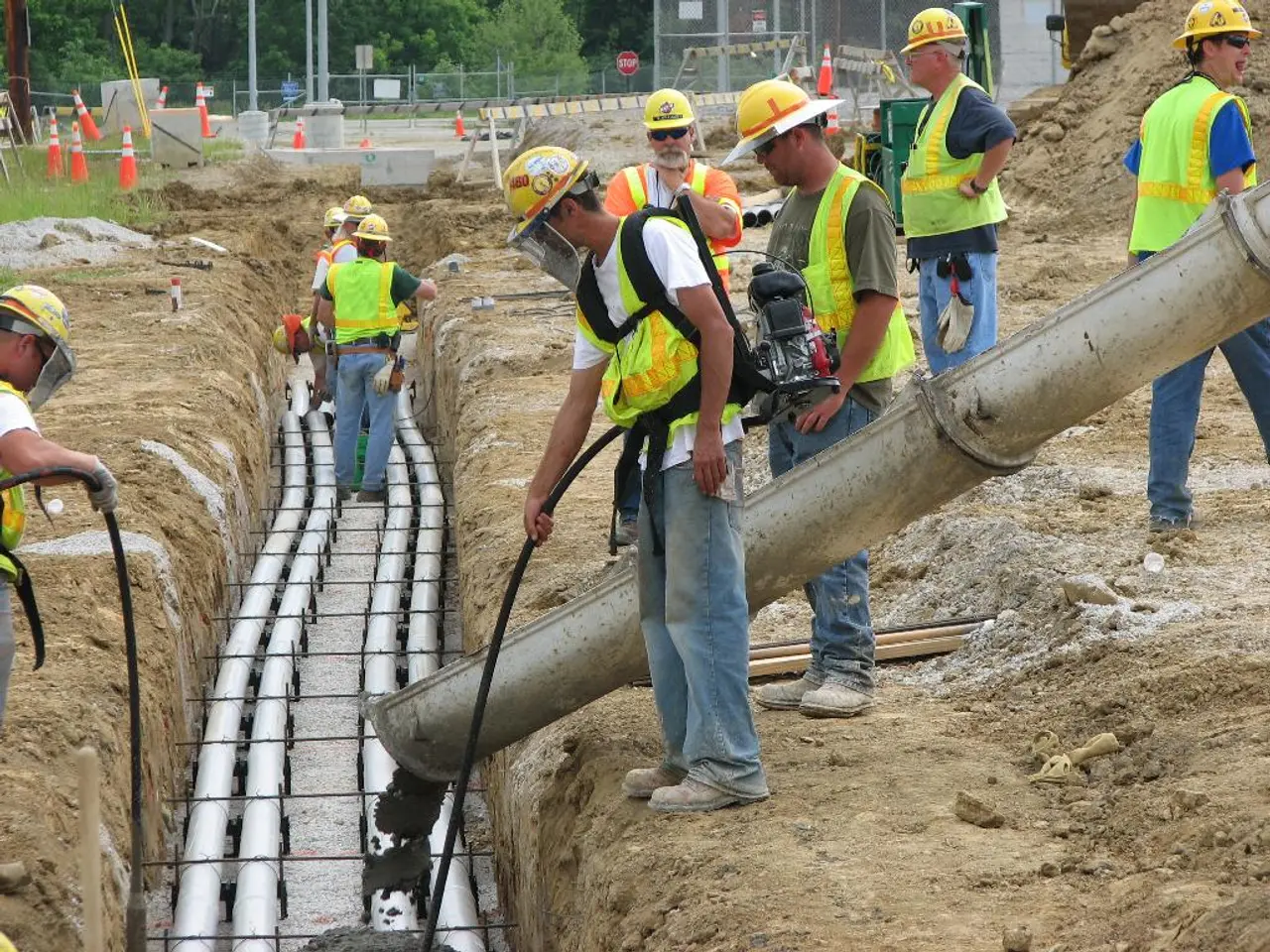Uncompleted repairs on dangerous structures with exterior cladding remain untouched, as per new findings
UK Government Pushes Forward with Remediation Acceleration Plan (RAP) for Dangerous Cladding
The UK government's Remediation Acceleration Plan (RAP) aims to expedite the removal of dangerous cladding from high-rise private sector residential buildings, particularly those with Aluminium Composite Material (ACM) cladding, by the end of March 2025.
According to the latest statistics from the DLUHC, as of March 2024, over 4,000 residential buildings 11 metres or taller have been found with unsafe cladding, and repairs have not started on 58% of these dangerous structures [1].
The RAP has set clear deadlines and tougher penalties for developers or responsible parties not complying with remediation requirements. By the end of March 2025, remediation work is expected to have begun on the riskiest high-rise private sector buildings with ACM cladding, with government-funded schemes expected to follow by the end of 2025 [1].
The identification of unsafe buildings is ongoing via data assessments and a building register, focusing on those over four storeys (roughly 11 metres and above) [1]. However, progress in Scotland and Wales is slower, with criticism about the slow remediation pace and ongoing legislative and policy development to tackle the issue effectively [2][4][5].
In England, the overall number of buildings where remediation work has started or is already completed has more than doubled since the end of February 2023. As of 31 January 2024, 42% of the 1,500 high-rise and mid-rise buildings developers have committed to remediate have started work, with work completed on just 307 of these buildings [1].
The industry is expected to pay approximately £3bn over the next 10 years through an expansion of the Building Safety Levy. This levy is a contribution the industry is expected to make, in addition to fixing their own buildings [1].
The government's Cladding Safety Scheme, announced in November 2022, financially supports applications for buildings where the applicant cannot afford the repairs [1]. A right to manage company, formed by qualifying leaseholders, can be held responsible for cladding repairs in line with the Commonhold and Leasehold Reform Act 2002. The building's freeholder or head leaseholder can also be held responsible for dangerous cladding [1].
In April 2022, housing secretary Michael Gove stated that developers have no option to avoid paying for cladding repairs on buildings they built or own [1]. However, the government has not specified any consequences if cladding deals are not reached, but has threatened "severe consequences" in the past [1].
Despite the progress, significant challenges remain to complete these works promptly and protect residents. The focus remains on buildings 11 metres or taller, starting with those posing the highest risk due to ACM cladding [1][3].
[1] - UK Government's Remediation Acceleration Plan (RAP) [2] - Scotland's Cladding Crisis [3] - Wales' Cladding Crisis [4] - England's Cladding Crisis [5] - Building Safety Bill
Despite the UK Government's efforts to address the issue of unsafe cladding in high-rise buildings, there is a general-news concern regarding the slow progress in Scotland and Wales. Meanwhile, in the realm of sports, the government's remediation fund could potentially be used for providing affordable housing solutions, thus impacting the housing market.








